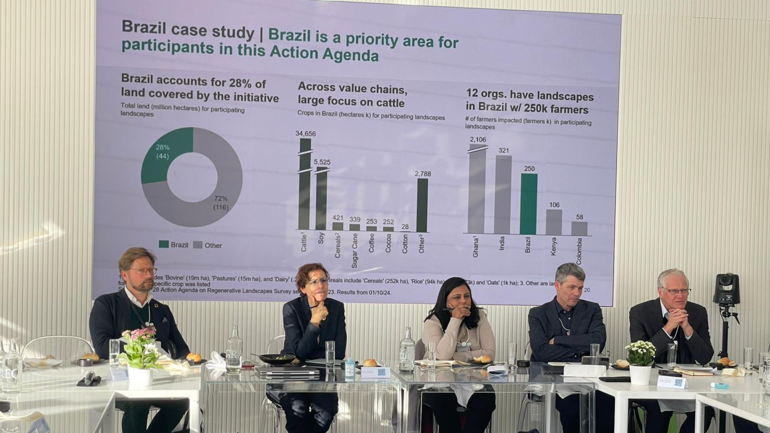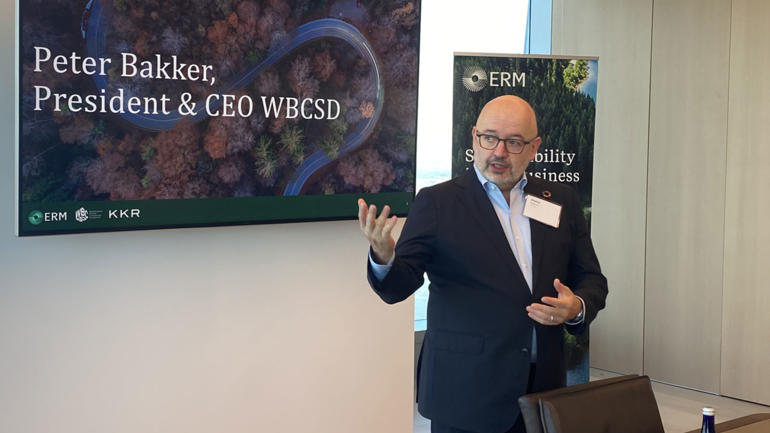It’s hard to believe it’s already been one year since the global adoption of the Sustainable Development Goals, on September 25, 2015.
As businesses around the world grapple with the implications of this new framework, one thing has become crystal clear: The SDGs will not be realized without business. With an annual $5 trillion to $7 trillion needed to finance the goals, business has a critical role to play as a source of investments and as a driver of technological development and innovation, not to mention as an engine for economic growth and employment. Many forward-thinking companies already realize this, and they are taking action.
At WBCSD, we have been making a concerted effort to ensure that each of these companies is on the same page with respect to the SDGs, so that their initiatives across sustainable development are significant, relevant and meaningful.
Ongoing challenges and new opportunities
Seventeen goals and 169 targets are a lot for any company to keep track of. On top of that, the goals are closely interconnected, which adds further complexity.
There is a real risk of companies suffering from information overload, as organizations across the world strive to make sense of the SDGs for every industry, sector and geographical location. In a very short period of time after global adoption, it became obvious that business needed a way to cut through the noise.
With this in mind, WBCSD collaborated with the U.N. Global Compact and GRI to develop the SDG Compass which provides guidance to companies on how to can align business strategies with the SDGs and measure their impact. We complemented these efforts by developing the SDG Business Hub, a dynamic online platform showcasing business insight, emerging tools and resources in this space.
Each of these valuable resources are designed to point business in the right direction for achieving the SDGs and enhancing company practice.
One of the key messages underlined by both the Compass and the Hub is that the SDGs represent an immense opportunity for business.
Here’s why:
First: while the SDGs themselves are not legally binding, they still serve as an important road map regarding potential future policy direction at international, national and regional levels. Companies that align themselves with the SDGs and are able to communicate clearly about how their business helps governments to achieve their goals, are likely to be able to consolidate a strong license to operate and to differentiate themselves from competitors. Likewise, those that don’t will be exposed to growing legal and reputational risks.
Second: Achieving the SDGs requires unprecedented public and private finance, which translates into new opportunities for business engagement and market penetration. Forward-thinking companies are in a unique position to seize these opportunities.
Third: The success of the SDGs will create thriving, inclusive economies around the world and provide better social, political and environmental stability across the globe, enabling businesses everywhere to flourish. In other words, we have an interest in achieving the SDGs because business cannot succeed in societies that fail.
Of course realizing the SDGs by no means will be easy. The goals represent an ambitious agenda which in many cases will require complete systems overhaul.
We need to completely change course. But this isn’t news
WBCSD maintains a long-standing commitment to articulating the business case for sustainable development and delivering solutions on a massive scale. Our cornerstone report Vision 2050 calls for a world where 9 billion people are all living well, within the boundaries of the planet by mid-century. It represents an agenda that is perfectly aligned with the ambitions set out in the SDGs.
Today, companies are in the process of understanding and prioritizing which SDGs are the most relevant, and where they can have the widest, most positive impact. Because of their strong foundation in Vision 2050, many WBCSD members are forging ahead.
What’s next?
The SDG Compass advocates that in order to fully align with the SDGs, companies should look to 1) fully understand the goals in a business context; 2) define their priorities; 3) set goals; 4) integrate new practice; and 5) report on and share their progress.
Right now, many companies are still at the start of this journey. Real change will come when we put a concerted effort into measuring our progress and sharing our results. Leaders can only lead when others follow, and if businesses don’t track their progress back to the SDGs, their efforts will mean less in the long-term.
The challenging nature of this field is matched only by the scale of the opportunity that it represents both to business and to society as a whole. The Business Commission for Sustainable Development is working on the "business case" for companies to engage with the SDGs. WBCSD remains committed to forging collaboration and information sharing on this topic with a view to supporting companies as they move beyond business-as-usual to undertake an ever more transformative role in society. What we need now is to take a deep breath and keep moving forward.
We’re only one year in and we still have a long way to go.
This piece was originally published on www.greenbiz.com








